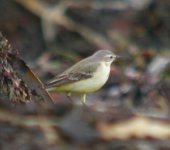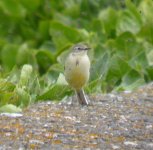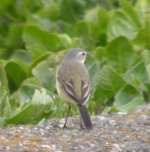CJW
Hit-and-run WUM
Yesterday I mentioned finding 3 Yellow Wagtails on a nearby beach in THIS thread.
Well one of the birds is still present today and I have just taken some digiscoped shots of it and, in reviewing them, the bird appears very 'cold', washed-out, grey/blue about the head (contrasting with the olive upperparts).
Does anyone know/think that Blue-headed females are identifiable. Perhaps even 1st Summer males?
It's a few years since I've seen a female-type flava wag', but I seem to remember the head colouraion on female British birds being pretty much concolourous with the mantle (?).
I'll post the photos this evening for your input, but in the meantime I'd be interested in hearing your thoughts.
Well one of the birds is still present today and I have just taken some digiscoped shots of it and, in reviewing them, the bird appears very 'cold', washed-out, grey/blue about the head (contrasting with the olive upperparts).
Does anyone know/think that Blue-headed females are identifiable. Perhaps even 1st Summer males?
It's a few years since I've seen a female-type flava wag', but I seem to remember the head colouraion on female British birds being pretty much concolourous with the mantle (?).
I'll post the photos this evening for your input, but in the meantime I'd be interested in hearing your thoughts.







